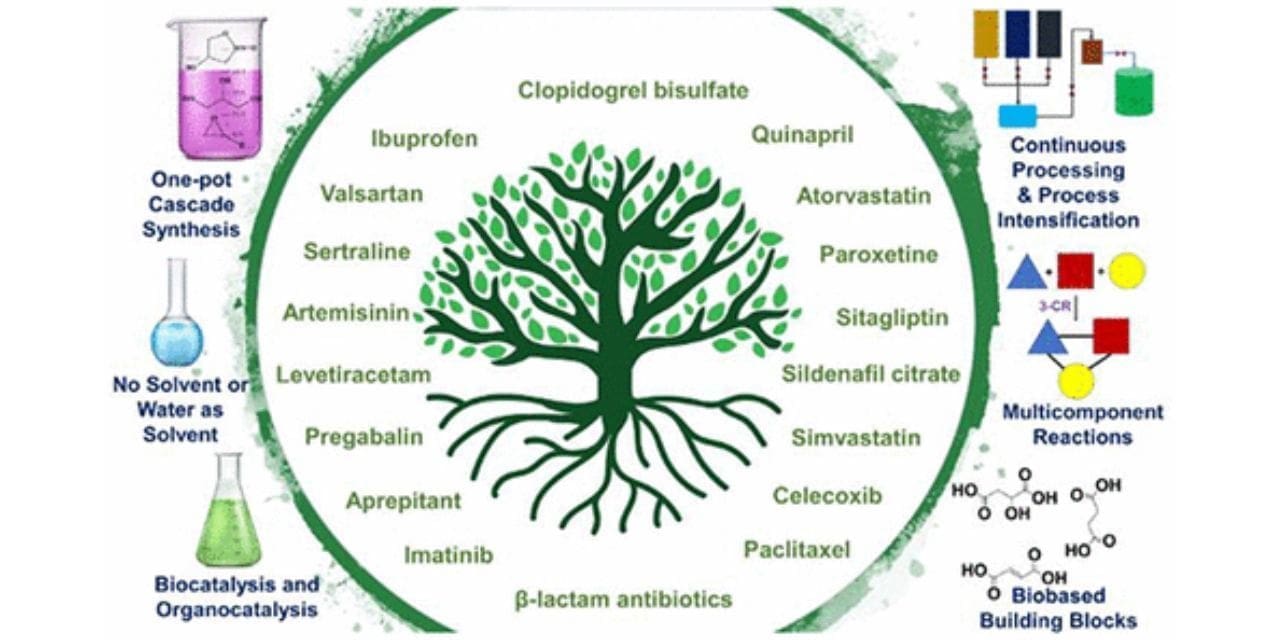The pharmaceutical solvents market is capturing a valuation of US$ 3.9 billion in 2023 and is predicted to reach US$ 6.1 billion by 2033. The market is registering a CAGR of 4.6% during the forecast period.
Several Factors Influence the Global Market are:
Due to the rising wastage and the high cost of pharmaceutical solvents, key manufacturers are investing in green chemical processes. It helps to minimize wastage and boost sales.
The regulatory authorities are improving the green chemical processes to encourage the leading players to adopt these strategies. For instance, the United States Environmental Protection Agency (EPA) acknowledged the need for green chemical processes. It helps to reduce the emission of toxic chemicals used in drug formulation.
With the adoption of green chemical processes, the pharmaceutical industry is projected to save millions in manufacturing costs. Adopting these processes can efficiently reduce the hazardous effect and use eco-friendly drug solvents.
The rising demand for novel drug delivery development systems such as inhalation, transdermal patches, and implants drives the market growth. The popularity of natural solvents is increasing due to concern over environmental impacts. The growing advanced technology, such as nanotechnology is expected to boost the market size.
Increase Usage of Residual Solvents and Toxic Chemicals. Decline the Market Growth
The pharmaceutical industry is witnessing significant investments in developing medical and drug delivery systems. These solvents are increasingly being used for the formulation of drugs and vaccines.
The emission of toxic chemicals and residual solvents is negatively impacting the environment. Hence, regulatory bodies imposed stringent regulations surrounding the toxicity of used solvents.
Manufacturers are investing extensively to develop green chemical processes to reduce the number of solvents used and their toxicity. It is expected to create opportunities for key players working for green solvents. The fluctuations in raw material prices and adopting alternate technologies limit market growth.
Pharmaceutical Solvents Market, 2018 to 2022 Historical Sales, Compared to 2023 to 2033 Future Outlook
The market was valued at US$ 3 billion in 2018 and is anticipated to reach US$ 3.7 billion in 2022. The market stood at a CAGR of 4.2% between 2018 and 2022.
As per Future Market Insights (FMI), the demand for pharmaceutical solvents across the globe is projected to increase by 1.5x, registering healthy growth. The overall sales in the market are projected to witness a sharp inclination with ongoing development in the healthcare infrastructure.
Growing investments for new drug delivery systems and increasing demand for fresh medicines and vaccines are fueling the demand for pharmaceutical solvents. Pharmaceutical solvents are extensively used in the manufacturing of drugs and vaccines by dissolving other compounds.
The manufacturers are enhancing the pharmaceutical sector by playing a crucial role in developing quality, drug formulation, and delivery. The increasing demand for pharmaceuticals and growing advanced technologies fuel the global market. These factors are anticipated to drive the market growth.
Asia Pacific is one of the significant nations in the global market, rapidly capturing huge growth. The increasing huge investments the government supports, and rising awareness are advancing the market growth. The growing urbanization, population, technological advancements, and increasing economies are predicted to drive market growth.
Short Term (2023 to 2026): The rising chronic diseases, growing generic population, and increasing demand for pharmaceutical solvents fuel the market growth. Asian countries are significantly growing due to increasingly advanced technologies such as drug delivery and nanotechnology.
Medium Term (2026 to 2029): Growing urbanization, population, and cost-effective treatment drive market growth. The increasing popularity of natural solvents in the pharmaceutical sector over the concerns towards environmental impacts are advancing the market growth.
Long Term (2029 to 2033): Rising research and development activities, launching better innovative products, and government initiatives fuel market opportunities. Developing countries are rapidly increasing due to the innovation of new drug delivery systems propelling the market size.
How can Manufacturers Expand the Global Market?
Manufacturers can expand the global market through their several marketing strategies, including:
Research and Development: Manufacturers invest their precious time and money in research and development activities to develop unique and innovative pharmaceutical solvents. The manufacturers are focusing on developing sustainable, natural, and eco-friendly solvents which are safe and effective.
Branding and Marketing: The manufacturers advertise their innovative products to reach relevant consumers. These manufacturers are growing brand awareness with pros and cons to build a bond and trust among their customers. Manufacturers create several marketing campaigns to increase their sales. They improve drug solubility, enhance bioavailability and reduce impurities.
Partnerships: The manufacturers are partnering with pharmaceutical companies to develop customized solvents. It helps manufacturers to develop more aligned products to increase the consumer’s demand for their specific needs.
Enhance Distribution Networks: Manufacturers can expand the market through distribution networks such as suppliers, wholesalers, and retailers. Through these, the manufacturers can increase their product’s sales volume.
Competitive Landscape
The number of essential players highly fragments the market. These players play a vital role in expanding the global market through innovations, new product launches, and research and development activities. The companies offer a wide range of eco-friendly solvents to reduce carbon footprints. They develop strong bonds with their consumers to satisfy their needs.
They are developing improved, efficient, customized, and safe products through advanced technologies. The key players adopt various marketing strategies to uplift the market, including mergers, acquisitions, partnerships, agreements, collaborations, and product launches.

